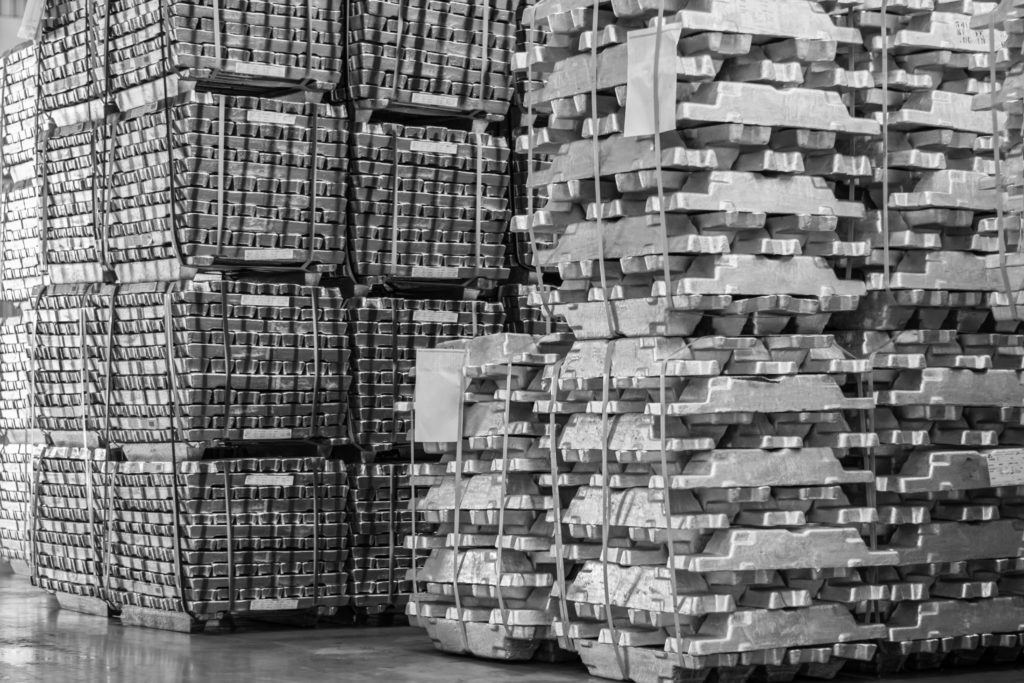
The South Korean port of Gwangyang has emerged as the new hub for storing London Metal Exchange (LME) aluminum.
LME-registered warehouses in the city currently hold 256,650 metric tons of aluminum, accounting for 49% of all the light metal sitting in the exchange’s global warehouse network.
Gwangyang held just 24,025 metric tons of aluminum at the start of the year but large inflows of mainly Russian-brand metal have lifted inventory above that of Malaysia’s Port Klang, the previous preferred location for exchange storage.
Crucially, Gwangyang now holds 70% of live stocks in the LME system. This means that it’s the place to go for anyone needing metal from the market of last resort.
Such as the entity that scooped up 75,600 metric tons on Aug. 17 and then cancelled it all in possible preparation for physical load-out.
Another 54,000 metric tons of aluminum have arrived in the intervening week, promising more turns of the storage carousel.
Weak demand has caused LME time-spreads to balloon out to super-contango levels, stimulating interest in the stocks financing trade. The battle for units will be fought in Gwangyang.

A total 198,125 metric tons of aluminum were warranted at LME warehouses in Gwangyang in the first quarter of this year, most of it arriving in four single-day clips.
Most of this inflow was Russian metal being delivered by Glencore, which has an off-take deal with Russian aluminum giant Rusal.
Although not officially sanctioned, Rusal’s metal has been displaced by the combination of penal US tariffs and self-sanctioning by Western users opting for other brands.
Almost all of the aluminum arrivals were placed on warrant at warehouses operated by ISTIM, which was storing 200,425 metric tons of LME metal at the end of March.
ISTIM has registered 24 new LME warehouse units in Gwangyang over the last year and now operates 31 out of 63 LME units in the port.
LME storage capacity in Gwangyang has grown by 35,000 square metres since the end of September 2022 and with 249,000 square metres it is now the fourth-largest exchange storage location after Rotterdam, Busan, also in South Korea, and Port Klang.
The latter still boasts 407,000 square metres of LME capacity, reflecting its previous dominance in the aluminum storage game. Stocks in the Malaysian port were a mammoth 668,000 metric tons at the start of last year.
They have since fallen to 221,600 metric tons and almost all of what remains has been cancelled, leaving just 43,225 metric tons of live on-warrant stocks.

The competition to store LME aluminum during periods of weak demand is not new. Port Klang was the previous battleground. In the wake of the 2008 financial crisis it was first Detroit and then the Dutch port of Vlissingen.
This time around, however, the battle comes with a distinct Russian twist.
LME warranted aluminum stocks at the end of March were almost evenly split between Russian-brand metal, accounting for 53% of the total, and Indian-brand metal with a 45% share of the total.
Port Klang stocks were raided in May and early June with 132,300 metric tons of aluminum cancelled on May 10 and another 68,250 metric tons taken out of circulation over the end of the month and the first week of June.
After the Port Klang clear-out the ratio of Indian-brand aluminum slumped to 18% of total on-warrant stocks at the end of June, while the ratio of Russian metal surged to 80%.
It looks as if someone scooped up the non-Russian metal at Port Klang as a spoiler for anyone else wanting it.
Most of the free-float warrants in the LME system are now Russian and sitting in the port of Gwangyang.
Interestingly, there was no load-out queue at Port Klang at the end of July despite the mass cancellations of May and early June. Whoever grabbed up all that metal seems in no rush to actually move it.
ISTIM had a load-out queue in Port Klang at the end of every month bar November last year, attesting to its central role in the competition for free-float LME aluminum.
The queue has now followed the aluminum to Gwangyang. The wait to move metal from ISTIM warehouses in the city was 17 days at the end of June and 16 days at the end of July.
It may just have got longer if whoever cancelled all the aluminum on Aug. 17 wants to move it to cheaper storage.
Warehousing is the single largest cost variable of the stocks financing trade, which is why the trade tends to be accompanied by large, often circular movements of inventory between on-exchange and off-exchange storage.
Gwangyang looks set to be the new Port Klang in this respect, particularly since competition between warehouse operators seems to be hotting up.
While the first-quarter arrivals at Gwangyang mostly flowed into ISTIM-operated sheds, other warehouse players in the port have been getting in on the act.
ISTIM took in 14,400 metric tons of aluminum in July with the balance 16,650 split between C. Steinweg, Pac Global Services, Henry Bath and Access World.
The Gwangyang aluminum storage wars may just be starting.
(The opinions expressed here are those of the author, Andy Home, a columnist for Reuters.)
(Editing by Sharon Singleton)
Comments